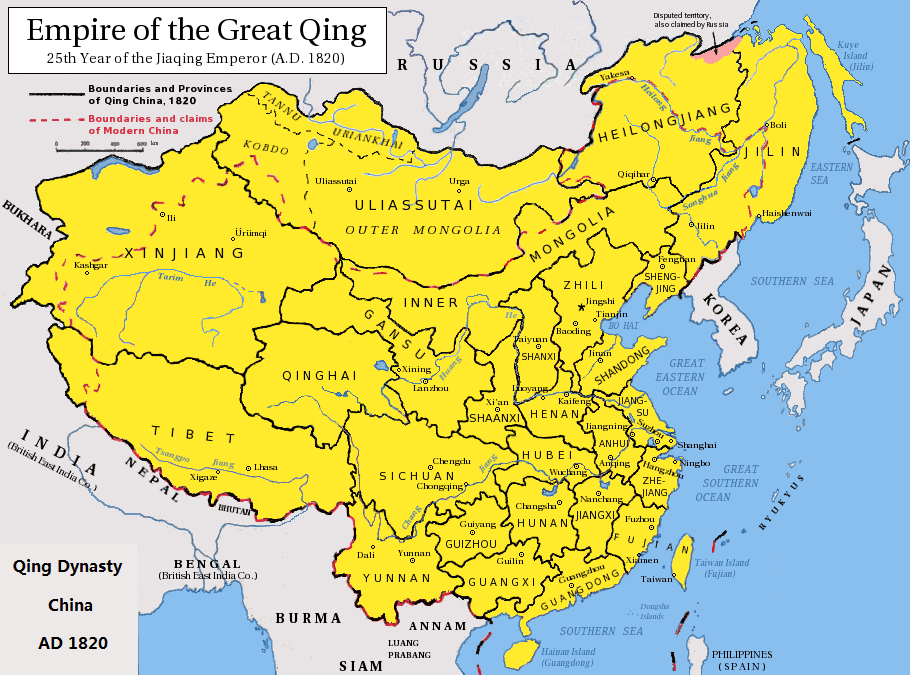The Qing Dynasty in China, after over 250 years, crumbled in 1912. But why?
Led by the Complexity Science Hub (CSH), an international research team has pinpointed key reasons behind the collapse, revealing parallels to modern instability and offering vital lessons for the future.

China is considered today to be the world’s largest economy (in terms of PPP). However, this position is not new. In 1820, China’s economy already held the top spot, accounting for 32.9% of the global GDP. In the interim, there was a period of decline followed by a resurgence. After over 250 years in power, in 1912, the Qing Dynasty collapsed despite being considerably wealthier at the time than modern-day China. “This clearly demonstrates that any economy must be vigilant as circumstances can change, and sometimes rather rapidly,” emphasizes Georg Orlandi, the study’s first author.
SIMILAR ROOTS THEN AND NOW
“It’s crucial to comprehend the origins of such instabilities. Assuming it’s a thing of the past and can’t recur would be a mistake. Such changes can indeed happen because the underlying mechanisms bear surprising similarities,” CSH researcher Peter Turchin points out.
Scientists have been attempting to pinpoint the causes behind the fall of the Qing Dynasty for two centuries. Various factors had previously been proposed, including environmental disasters, foreign incursions, famines, or uprisings. However, “none of these factors provides a comprehensive explanation,” notes Turchin.
THREE MAIN DRIVERS
Hence, in this study, researchers amalgamated various factors and discovered that three elements dramatically heightened socio-political pressures:
Firstly, there was a fourfold population explosion between 1700 and 1840. This resulted in reduced land per capita and caused an impoverishment of the rural populace.
Secondly, this led to increased competition for elite positions. While the number of contenders soared, the number of awarded highest academic degrees declined, reaching its nadir in 1796. Because such a degree was necessary for obtaining a position in the powerful Chinese bureaucracy, this mismatch between the number of positions and those desiring them created a large pool of disgruntled elite aspirants. The leaders of the Taiping Rebellion, perhaps the bloodiest civil war in human history, were all such failed elite-wannabes.
Thirdly, the state’s financial burden escalated due to rising costs associated with suppressing unrest, declining per capita productivity, and mounting trade deficits stemming from depleting silver reserves and opium imports.
Collectively, these factors culminated in a series of uprisings that heralded the end of the Qing Dynasty and exacted a heavy toll in terms of Chinese lives lost.
THE QING WERE AWARE
According to the study’s findings, social tensions had already peaked between 1840 and 1890. “Assuming that the Qing rulers were unaware of this mounting pressure would be erroneous,” explains Turchin. The fact that the dynasty endured until 1912 rather underscores its institutional structures’ robustness.
However, many of their attempted solutions proved short-sighted or inadequate to the task; for instance, the government raised the allowable quota for people passing certain degree exams but without increasing the number of available openings. This ended up exacerbating the already-building tensions. With the arrival of potent geopolitical challengers through the late 19th century, the rulers ultimately couldn’t avert their downfall.
PREVENT INSTABILITY TODAY
We can draw valuable lessons from this historical process for the contemporary era and the future. Many nations worldwide are grappling with potential instability and conditions that closely resemble those of the Qing Dynasty. For instance, competition for top positions remains exceedingly fierce. Orlandi cautions, “When a large number of individuals vie for a limited number of positions, political decision-makers should view this as a red flag, as it can, at the very least, lead to heightened instability.
“Unfortunately, the corrosive impact of rising inequality and diminishing opportunities develop over longer time scales that make them hard to recognize,” adds co-author and CSH Affiliated Researcher Daniel Hoyer, “let alone effectively combat within the short political cycles we see in many countries. Without long-term vision and targeted strategies to relieve these social pressures, many places are at risk of going the way of the Qing.”
NO CRYSTAL BALLS
“We aren’t prophets. Our primary aim is to comprehend social dynamics, which we can then leverage for making forecasts,” elucidates Orlandi. The effectiveness of this endeavor using the Structural Demographic Theory (SDT), a method co-developed by Peter Turchin that represents societies as complex interactive systems, has been demonstrated by researchers on multiple occasions. For instance, a study published in 2010 forecasted the 2020 instability in the USA.
About the study
The study “Structural-demographic analysis of the Qing Dynasty (1644–1912) collapse in China” was published in PLoS ONE.





